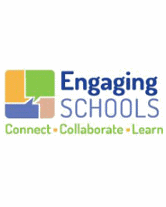Creating Opportunities When You Only Listen
Sometimes teachers are first-rate talkers and second-rate listeners. It's easyfor us to interrupt, over explain, finish a student's ideas, give advice, correct someone too quickly, or make sure we have the last word, especially if it's clever or funny. It takes a conscious effort to ONLY LISTEN without responding. This simple gesture surprises students when we do it. Here are a few ways to try it out.
- Check yourself during discussions. When you really want to listen to what students have to say, use a timer, set it for 5 or 10 minutes, and invitestudents to respond to an open-ended question that might generate lots of different viewpoints.
- When you've made a choice to conference with students one-to-one (especially when you believe that there's a worry or problem), use your favorite opener to invite someone to talk.
(For example, So what's going on?or How's it going? or You don't seem your usual self. Anything going on that's getting in the way? Then STOP. Don't fill the air space with conversation. Sit with the silence and then only listen. - When you have a few minutes, invite students to share stories that can help you discover more about who they are and what's important to them. For example, you might ask students to share reflections about:
- Something you do at home that helps out your family.
- Something you've done that's special for a brother or sister or other relative.
- One change you would like to make in the schedule or curriculum.
- One reason why it's great to have a family pet.
- One thing that makes it hard to do homework all the time.
- Someone you would like to shadow for a whole day so you could learn more about what they do.
- One thing that would make your community a better place for teens.
- Your favorite show on TV and why you like it.
- The best and worst thing about having siblings.
- Something weird or unusual that you've seen on TV or read about in a magazine or newspaper.
- At the end of a learning unit, after students have written down their reflections, take a few minutes and listen to students' responses.
- More Personalizing the Secondary Classroom
Adapted from Partners in Learning: From Conflict to Collaboration by Carol Miller Lieber.









